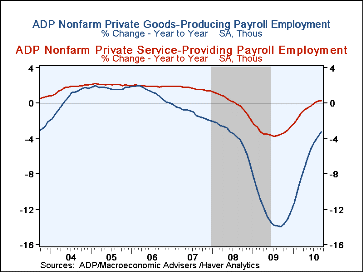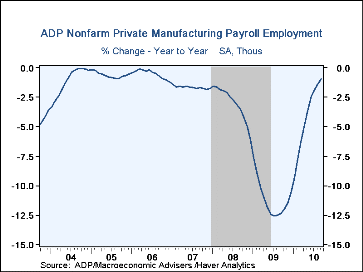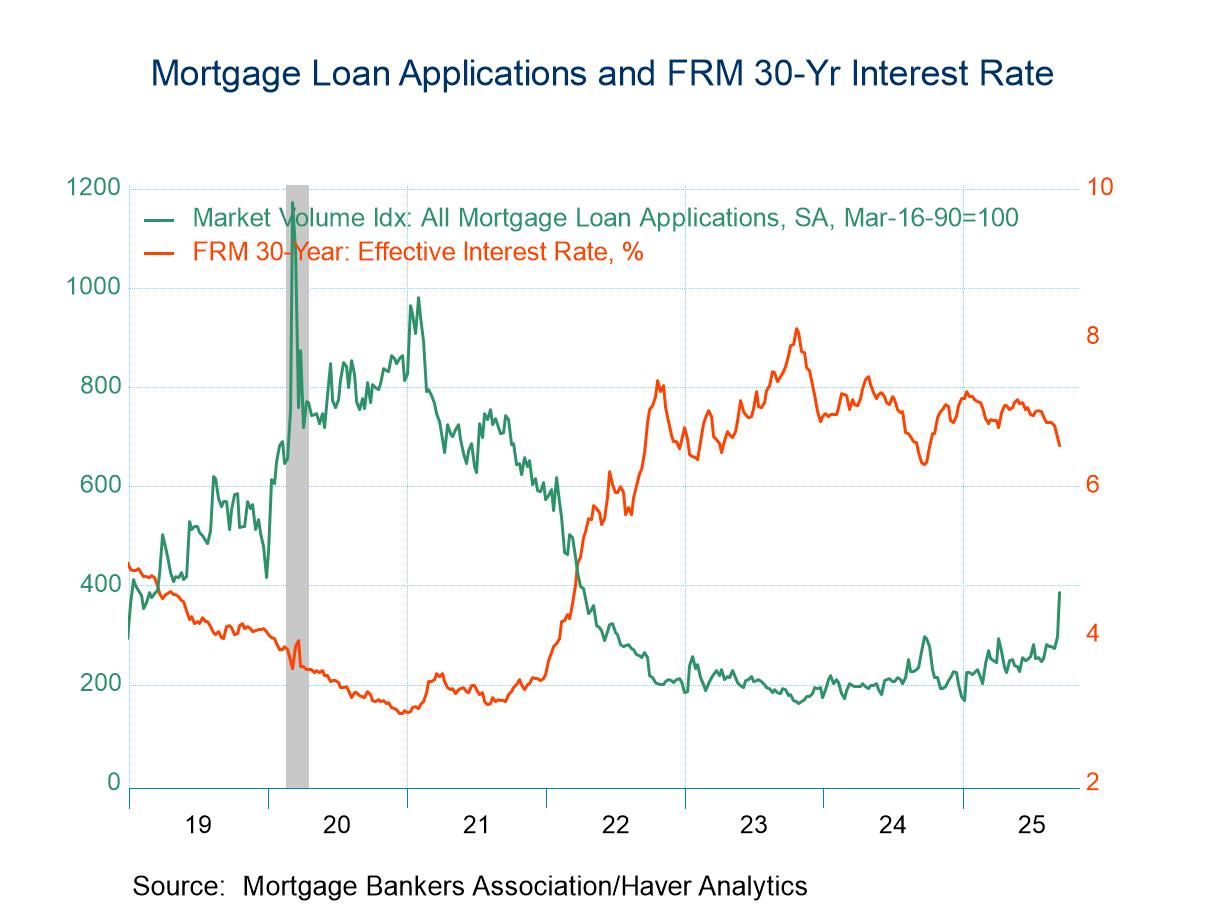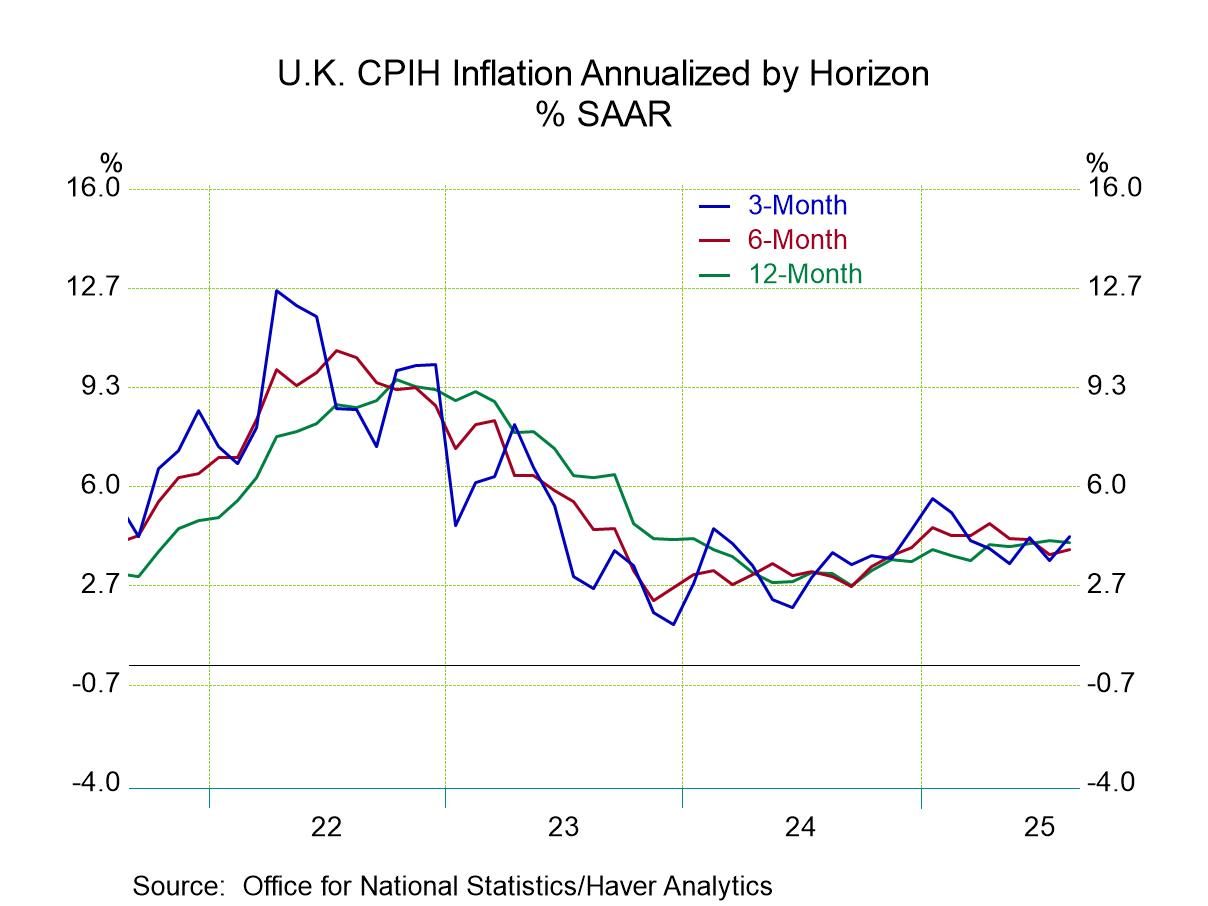 Global| Oct 06 2010
Global| Oct 06 2010ADP Report Again Indicates Reversal In U.S. Private-Sector Job Recovery
by:Tom Moeller
|in:Economy in Brief
Summary
Pressure continues on the ability of the U.S. market to grow. After seven consecutive months of modest recovery, the payroll processor ADP, in their latest National Employment Report, indicated that private nonfarm payroll levels fell [...]
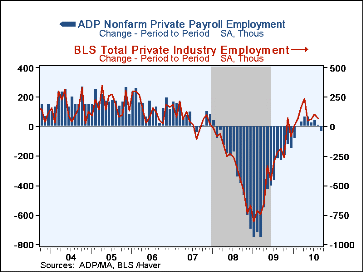 Pressure continues on the ability of the U.S. market to grow. After
seven consecutive months of modest recovery, the payroll processor ADP, in
their latest National Employment Report, indicated that private nonfarm
payroll levels fell 39,000 during September. The August report was revised
to show a 10,000 worker increase which was revised up from a 10,000 worker
decline reported initially. The latest decline again disappointed
Consensus expectations for an 18,000 gain.
Pressure continues on the ability of the U.S. market to grow. After
seven consecutive months of modest recovery, the payroll processor ADP, in
their latest National Employment Report, indicated that private nonfarm
payroll levels fell 39,000 during September. The August report was revised
to show a 10,000 worker increase which was revised up from a 10,000 worker
decline reported initially. The latest decline again disappointed
Consensus expectations for an 18,000 gain.
The U.S. Bureau of Labor Statistics will report August payroll employment on Friday. Economists expect a 5,000 worker increase in jobs overall. For comparison, the August increase of 10,000 in ADP's measure of private nonfarm payrolls was accompanied by a 67,000 rise in the BLS measure of private sector jobs. According to ADP and Macro-Advisers, the correlation between the monthly percentage change in the ADP estimate and that in the BLS data is 0.90. ADP compiled the estimate from its database of individual companies' payroll information. Macroeconomic Advisers, LLC, the St. Louis economic consulting firm, developed the methodology for transforming the raw data into an economic indicator.
A deeper 45,000 decline (-4.3% y/y) in goods producing employment accounted for much of the September jobs disappointment. Payrolls have been falling since early-2006 but the rate of decline has slowed substantially. At their worst, goods producing employment fell 334,000 during February of last year. In the manufacturing sector alone payrolls slipped another 17,000 (-1.0% y/y). Goods producing small payrolls fell 20,000 (-4.6% y/y) while medium-sized payrolls fell 12,000 (-2.0% y/y). Large-sized payrolls resumed their decline with a 13,000 drop (-3.4% y/y). Construction employment fell 28,000. The greatest monthly drop of 120,000 was logged during March of 2009. Financial activities jobs fell 13,000, stable with the monthly declines since August of last year.
ADP reported that private service-producing industry employment ticked up for the eighth consecutive month. However, the 6,000 September increase (0.3% y/y) was the smallest of the period. Small-sized payrolls grew 6,000 m/m (0.4% y/y) but medium-sized payrolls slipped 2,000 (+0.3% y/y). Large service-producing payrolls nudged up 2,000 (-0.2% y/y).
The ADP National Employment Report data is maintained in Haver's USECON database; historical figures date back to December 2000. The figures in this report cover only private sector jobs and exclude employment in the public sector. The full ADP National Employment Report can be found here. and the ADP methodology is explained here.
| ADP National Employment Report | September | August | July | Y/Y | 2009 | 2008 | 2007 |
|---|---|---|---|---|---|---|---|
| Total Nonfarm Private Payroll Employment (m/m Chg., 000s) | -39 | 10 | 42 | -0.3% | -4.9% | -0.7% | 1.1% |
| Small Payroll (1-49) | -14 | 3 | 23 | -0.3 | -4.1 | -0.1 | 1.8 |
| Medium Payroll (50-499) | -14 | 4 | 21 | -0.1 | -5.7 | -0.9 | 1.0 |
| Large Payroll (>500) | -11 | 3 | -2 | -0.8 | -5.6 | -1.8 | -0.2 |
| Goods Producing | -45 | -30 | -28 | -3.3 | -12.3 | -3.7 | -1.1 |
| Manufacturing | -17 | -2 | -12 | -1.0 | -11.1 | -3.0 | -1.7 |
| Service Producing | 6 | 40 | 70 | 0.3 | -3.3 | 0.0 | 1.7 |
Tom Moeller
AuthorMore in Author Profile »Prior to joining Haver Analytics in 2000, Mr. Moeller worked as the Economist at Chancellor Capital Management from 1985 to 1999. There, he developed comprehensive economic forecasts and interpreted economic data for equity and fixed income portfolio managers. Also at Chancellor, Mr. Moeller worked as an equity analyst and was responsible for researching and rating companies in the economically sensitive automobile and housing industries for investment in Chancellor’s equity portfolio. Prior to joining Chancellor, Mr. Moeller was an Economist at Citibank from 1979 to 1984. He also analyzed pricing behavior in the metals industry for the Council on Wage and Price Stability in Washington, D.C. In 1999, Mr. Moeller received the award for most accurate forecast from the Forecasters' Club of New York. From 1990 to 1992 he was President of the New York Association for Business Economists. Mr. Moeller earned an M.B.A. in Finance from Fordham University, where he graduated in 1987. He holds a Bachelor of Arts in Economics from George Washington University.


